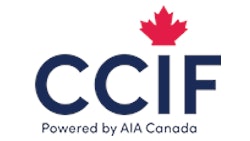
CCIF director Brigitte Pesant and chair Patrice Marcil.
CRM Staff
Montreal, Quebec — May 31, 2018 — There is a spectre haunting the collision repair industry, the spectre of a labour shortage. And the problem, as CCIF chair Patrice Marcil made clear at last week’s CCIF forum in Montreal, runs much deeper than low enrollment numbers.
For one thing, many colleges have not adapted to the changes that have swept through the industry in recent years, and their students are being taught on equipment that is up to 15 years out-of-date. For another, the equipment needed for the programs are very expensive, and the salaries offered to recent structural technicians are much lower than in other industries.
“Last Wednesday, Patrice Marcil and I visited Canada’s largest collision repair program in Canada,” says CCIF director Brigitte Pesant. “We asked the students about their thoughts about their program, and many mentioned that the toolkit they were required to purchase cost about $4,000, compared to the $200 kit used by students in the construction program.”
While the extra investment may make sense for some careers, the starting salaries of repairers are, in some places, not high enough to justify the extra costs. As Pesant points out, in some provinces, new technicians can expect just $13.50 per hour, far less than in construction, where starting salaries are above $20 per hour.
“One student mentioned that, while it may not be a long-term career, he could work at Ikea for $24 per hour,” Pesant recalls.
The CCIF’s Collision Industry-Education Connection committee (CI-EC) has worked on two initiatives to help solve the labour shortage issues once and for all. One to provided the schools with more up-to-date equipment (particularily consumables like paints and glues), and the other, to attract new talent to the industry by raising the public’s awareness of the work done in the industry.
“Two years ago, there was a disconnect between the industry and the educators. Today, we are working with 23 colleges, which are all suffering from low enrollment,” she says.
The CI-EC has also been producing short videos on the work done by auto repairers designed to be shared on social media.
“We have identified eight key shop roles, from structural technicians to estimators and managers. In Montreal, we announced a new project initiative that the committee would like to pursue,” says Pesant. “We hope to receive the industry’s buy-in to create a series of short, social media friendly videos for the industry to use. It is the Committee’s hope that these videos will also assist colleges with their registration numbers by raising public awareness of the great career opportunities in the Collision industry.”
Pesant and Marcil are both convinced that the struggles facing auto repairing schools will continue unless the industry begins to provide more assistance.
“The truth is, as an industry, we are the consumers of a product that the colleges create,” says Pesant. “We need them to succeed, and we need to help out when they are struggling.”























